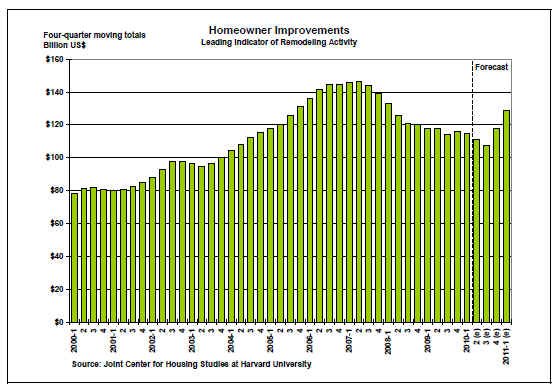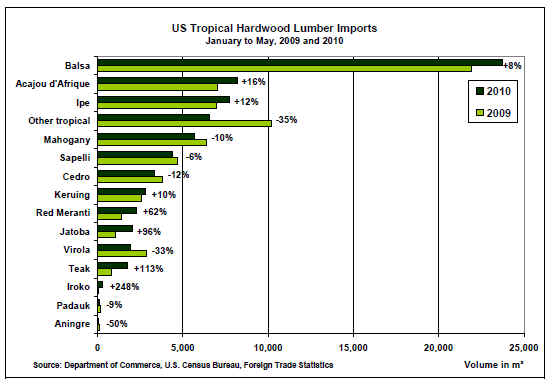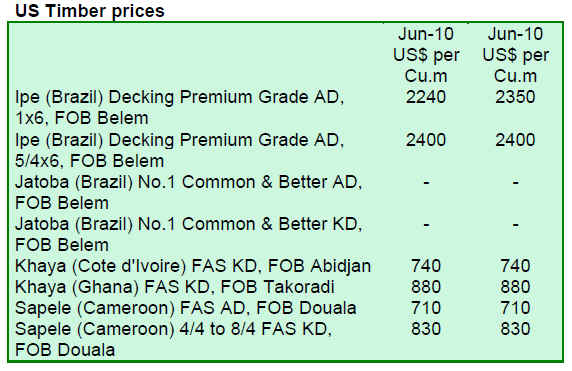|
Report from North America
PEFC demands that LEED include certification
systems other than FSC
The Programme for the Endorsement of Forest
Certification (PEFC) has joined US-based forest
certification systems in their call for certification systems
other than the Forest Stewardship Council (FSC) to be
included in LEED.
The green building rating and certification programme
LEED (Leadership in Energy and Environmental Design)
has grown tremendously in recent years in both the US
and Canada. The LEED Certified Wood Credit has been
undergoing a process of revision for about two years. At
the centre of this process is the USGBC forest certification
benchmark that, if the revision is approved, will be used to
judge which forest certification systems are worthy of
recognition under the LEED Certified Wood Credit.
The PEFC argues that by recognizing only FSC-certified
wood, LEED does not appreciate the wider benefits of
building with wood. More than two thirds of the world’s
certified forests are PEFC-certified. National standards
organisations from Australia, Canada, Denmark, Finland,
Germany, Ireland, Italy, Malaysia, the Slovak Republic,
Spain and the UK have joined the PEFC umbrella
organisation’s call.
Remodelling spending to increase by the end of 2010
The Joint Centre for Housing Studies at Harvard
University released the Leading Indicator of Remodeling
Activity forecast until the first quarter of 2011. Spending
is expected to grow by 5% on an annual basis in the last
quarter of 2010 and by 12% in the first quarter of next
year.

US tropical timber imports
Total US imports of tropical hardwood lumber in the
January to May period this year was nearly the same as in
2009 (+1%). There has been no significant recovery since
the downturn in imports in 2008 and 2009, except in a few
species. Red meranti, jatoba and teak all posted large gains
compared to the same time period last year. Imports of
balsa from Ecuador, acajou d’Afrique and ipe were also
higher than in year-to-date May 2009.
There has also been little change in hardwood moulding
imports from 2009. The US imported US$71 million in
year-to-date May 2010, 4% less than in the same period
last year. Both jatoba and ipe moulding imports from
Brazil remained below 2009 values at US$9.5 million (-
23%) and US$2.1 million (-25%), respectively. Cumaru
moulding imports from Brazil were down at US$1.9
million, a decline of 8% from last year. Cumaru moulding
imports from Peru continued increasing, totalling US$1.2
year-to-date May 2010.
January to May 2010 imports of hardwood flooring were
60% below the same period in 2009. The largest drop has
been in imports from China, down 79%. Hardwood
flooring imports from Brazil were US$959,000 (-26%),
while imports from Malaysia were US$868,000 (-31%).
Indonesian flooring exports increased to US$226,000 by
May 2010, up 38%.

Market trends
Hardwood demand from flooring producers remains
strong. Markets are relatively robust for a range of
products: residential flooring, sport floors and truck bed
floors. For millwork and moulding manufacturers business
continues to be slow. Especially demand for high-end
architectural millwork has not recovered since the
recession.
In general, many US customers tend to replace more
pricey hardwoods with less expensive alternatives, which
is affecting demand for tropical species such as mahogany.
However, demand for tropical timber traded in Euro
makes an exception, given the depreciation of the Euro
against the US dollar.
There has been little movement in prices since June. Price
increases for ipe seem to have slowed for the time being,
but European demand for ipe remains high and supplies
are thin.

|